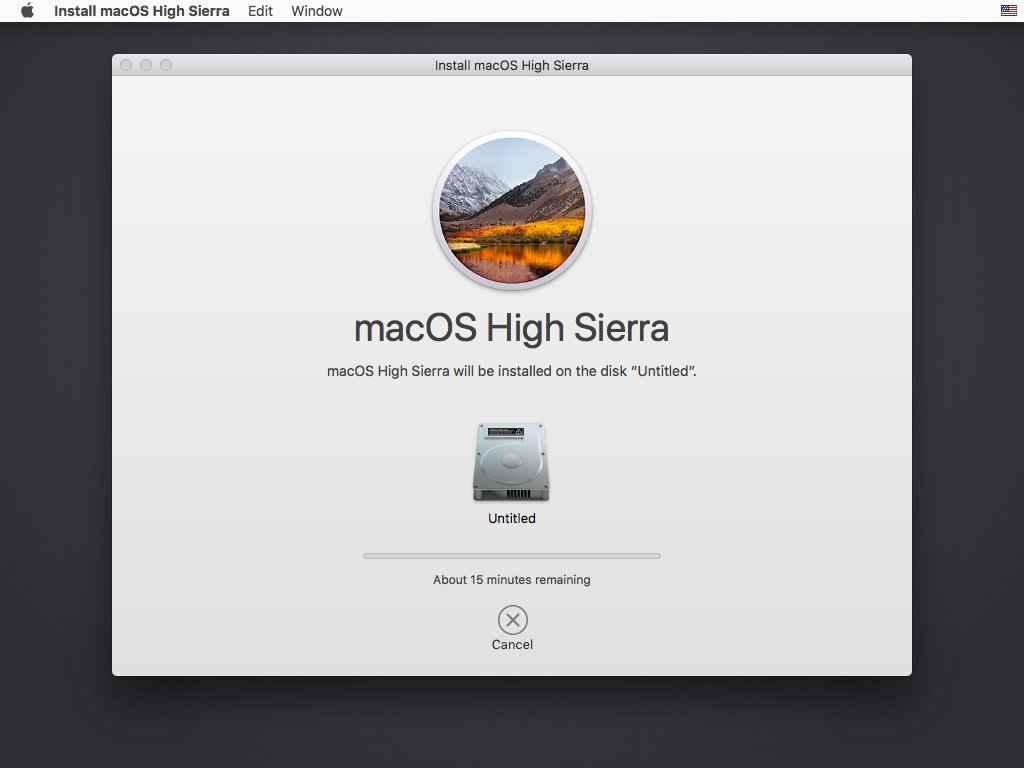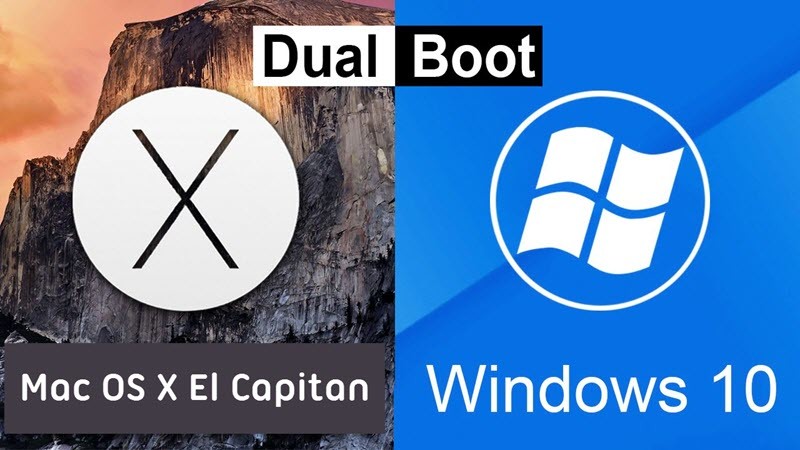These advanced steps are primarily for system administrators and people who are familiar with the command line. You don't need a bootable installer to upgrade macOS or reinstall macOS, but it can be useful when you want to install it on multiple computers without having to download the installer each time.
- Os X El Capitan Bootable Usb
- Os X Capitan Bootable Usb Free
- Os X Capitan Bootable Usb Iso
- Os X El Capitan 10.11.0 Bootable Usb
Why Make a Bootable USB Installer. A bootable installer for OS X El Capitan is a good idea, even if your plan is to perform an upgrade install. Having your own copy of El Capitan on a separate device ensures that you'll always be able to install or reinstall the OS X. Create Bootable USB for Mac OS X El Capitan with TransMac. A new pop up box will appear, click on the three-dots, and then select the macOS X El Capitan.DMG file from Windows. Then click on OK. Choose Mac OSX El Capitan DMG file. Since the file is huge so it will take quite time to complete. It may take about 20 to 30 mins or more.
What you need to create a bootable installer
- A USB flash drive or other secondary volume formatted as Mac OS Extended, with at least 14 GB of available storage
- A downloaded installer for macOS Big Sur, Catalina, Mojave, High Sierra or El Capitan

Download macOS

- Download: macOS Big Sur, macOS Catalina, macOS Mojave or macOS High Sierra
These will be downloaded to your Applications folder as an app called Install macOS [version name]. If the installer opens after download, quit it without continuing the installation. To get the correct installer, download from a Mac that is using macOS Sierra 10.12.5 or later, or El Capitan 10.11.6. For enterprise administrators, please download from Apple, not a locally hosted software update server. - Download: OS X El Capitan
This will be downloaded as a disk image called InstallMacOSX.dmg. On a Mac that is compatible with El Capitan, open the disk image and run the installer within, which has the name InstallMacOSX.pkg. It installs an app named Install OS X El Capitan into your Applications folder. You will create the bootable installer from this app, not from the disk image or .pkg installer.
Use the 'createinstallmedia' command in Terminal
- Connect the USB flash drive or other volume that you're using for the bootable installer.
- Open Terminal, which is in the Utilities folder of your Applications folder.
- Type or paste one of the following commands in Terminal. These assume that the installer is in your Applications folder and MyVolume is the name of the USB flash drive or other volume you're using. If it has a different name, replace
MyVolumein these commands with the name of your volume.
Big Sur:*
Catalina:*
Mojave:*
High Sierra:*
El Capitan:
* If your Mac is using macOS Sierra or earlier, include the --applicationpath argument and installer path, similar to the way this was done in the command for El Capitan.
After typing the command:
- Press Return to enter the command.
- When prompted, type your administrator password and press Return again. Terminal doesn't show any characters as you type your password.
- When prompted, type
Yto confirm that you want to erase the volume, then press Return. Terminal displays the progress as the volume is being erased. - After the volume has been erased, you may see an alert stating that Terminal would like to access files on a removable volume. Click OK to allow the copy to proceed.
- When Terminal says it's finished, the volume will have the same name as the installer you downloaded, such as Install macOS Big Sur. You can now quit Terminal and eject the volume.
Use the bootable installer
Determine whether you're using a Mac with Apple silicon, then follow the appropriate steps:
Apple silicon
Os X El Capitan Bootable Usb
- Plug the bootable installer into a Mac that is connected to the Internet and compatible with the version of macOS you're installing.
- Turn on your Mac and continue to hold the power button until you see the startup options window, which shows your bootable volumes.
- Select the volume containing the bootable installer, then click Continue.
- When the macOS installer opens, follow the onscreen instructions.
Intel processor
- Plug the bootable installer into a Mac that is connected to the Internet and compatible with the version of macOS you're installing.
- Press and hold the Option (Alt) ⌥ key immediately after turning on or restarting your Mac.
- Release the Option key when you see a dark screen displaying your bootable volumes.
- Select the volume containing the bootable installer. Then click the up arrow or press Return.
If you can't start up from the bootable installer, make sure the External Boot setting in Startup Security Utility has been set to allow booting from external media. - Choose your language, if prompted.
- Select Install macOS (or Install OS X) from the Utilities window, then click Continue and follow the onscreen instructions.
Learn more
A bootable installer doesn't download macOS from the Internet, but it does require an Internet connection to get firmware and other information specific to the Mac model.
For information about the createinstallmedia command and the arguments you can use with it, make sure the macOS installer is in your Applications folder, then enter the appropriate path in Terminal:
Os X Capitan Bootable Usb Free
Whenever new OS X release comes to Mac users, it is important to create a Bootable USB as a backup option to clean install. Most of the time upgrade works well, but there are chances your battery performance go poor or OS X corrupt due to apps installed on the computer. That is when we need to perform Clean Installation of OS X as the final troubleshooting method.
Download OS X El Capitan only from Mac App Store which is available right now. Simply launch App Store on your mac computer and you will see El Capitan already featured with free download button.
OS X El Capitan featured with tons of new features and improvements to existing features. I have installed it on my iMac and Macbook Pro, and so far it is great. As i mostly use my macbook pro at desk, didn’t notice any battery performance problems. There are reports from Macbook Pro and Macbook Air users who have upgraded to El Capitan regarding battery issues.
Another important step to do after downloading the OS X El Capitan is taking backup of the installation file. By default the location of the file set to /Applications folder and the file automatically deleted after completing the OS X upgrade. So it is very important for you to take a backup of the file named “Install OS X El Capitan” from “Applications” folder to create bootable USB or use it later.

Go to Applications folder by opening Finder once the download completed and OS X El Capitan installation wizard pop up comes on your desktop screen.
At this point, copy the file “Install OS X El Capitan” and paste it any folder on your hard disk drive. Now you have the copy of latest OS X released by Apple and you can use it whenever you want and share it with your friends saving 6 gigabytes of bandwidth for them.
Create OS X El Capitan Bootable USB
We are now ready to create the bootable usb disk drive of OS X El Capitan. All you have do is, follow the couple of steps suggested here and you are ready to install El Capitan on any mac computers.
Step 1: Connect USB Disk Drive to your mac computer and Open “Disk Utility” by typing it on Spotlight (CMD + Space Bar) or by going to “Applications – Utilities – Disk Utility”.
Step 2: Select the USB Drive from the list and on the Right side, select “Erase” tab and rename the USB drive as “Untitled” and click on Erase to perform the operation.
Step 3: Now the USB Drive is ready for OS X El Capitan installation. Make sure the copy of “Install OS X El Capitan” is there on /Applications folder.

Step 4: Launch “Terminal” and copy, paste the following command in Terminal then press Enter.
Step 5: Terminal will prompt for Root password, enter the root password and press enter. USB Disk formatting will start now followed by the copying of files required to create bootable os x el capitan usb drive.
Os X Capitan Bootable Usb Iso
It will take 5 to 10 minutes maximum and the Bootable USB Disk of OS X El Capitan will be ready for use.
If you don’t want to follow these steps and looking for an app to automate all these tasks and get the USB ready with OS X El Capitan then consider using, DiskMaker X which is compatible with OS X El Capitan as well. Download DiskMaker X 5 which comes around 7 MB and create the bootable usb drive easily.
Os X El Capitan 10.11.0 Bootable Usb
Thanks for reading, and feel free comment below if you have any queries. Have a wonderful day, and don’t forget to share this post with your friends and followers across Twitter, Facebook and Google+.